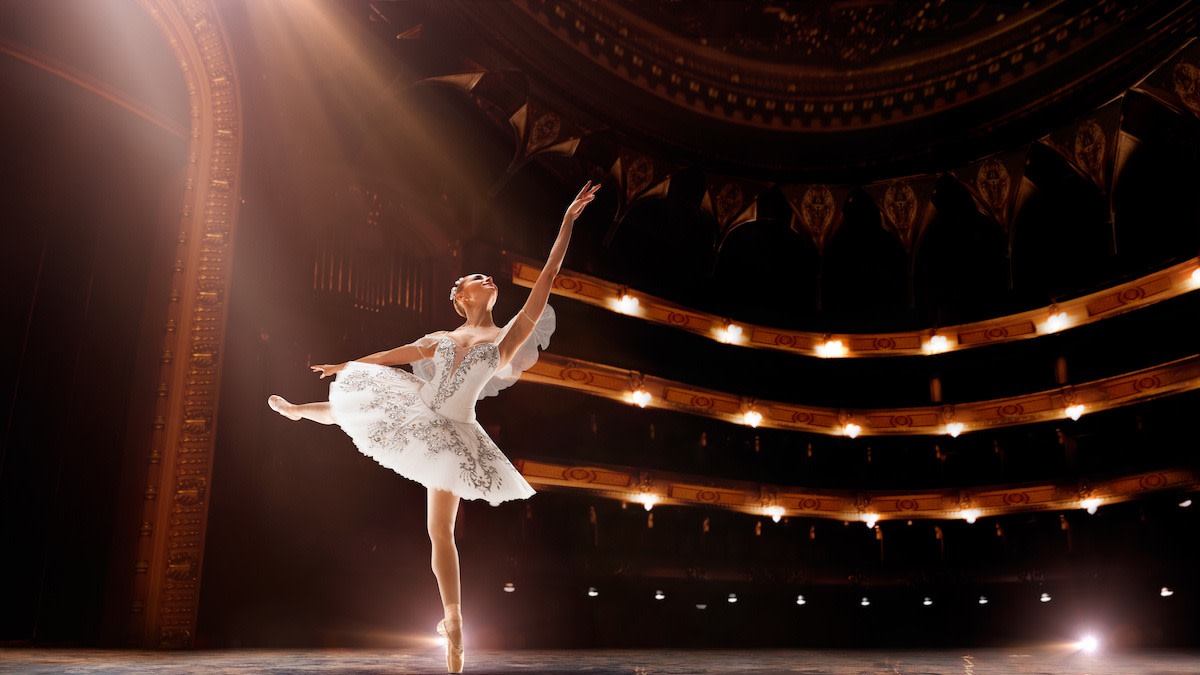Classical Ballet Guide: 7 Characteristics of Classical Ballet
Written by MasterClass
Last updated: Jul 29, 2021 • 3 min read
With its focus on flawless footwork, group alignment, and a graceful aesthetic, classical ballet technique creates the foundation for other ballet varieties.
Learn From the Best
What Is Classical Ballet?
Classical ballet is a type of dance performed to classical music, with productions like The Nutcracker and Pyotr Ilyich Tchaikovsky’s Swan Lake serving as prime examples of the style.
In classical ballet, dancers carry out precise movements, though they strive to appear flowing and ethereal. The style also features pointe work, in which dancers stand up on the point of their toes with special pointe shoes, as well as the turnout of the legs and feet, and high extensions of legs. Training focuses on strengthening the center (abdominals), in addition to the legs and feet.
Classical Ballet Across the World
Classical ballet developed into several training systems, which vary by location. The American Ballet Theatre School in New York is a classical ballet company. In Russia, the primary methods are Vaganova and Legat, with the Bolshoi Ballet being the premier classical ballet company. French training centers, such as the Paris Opera, use unique systems developed in-house.
In Italy, the Cecchetti method, named after dancer Enrico Cecchetti, is the standard. And in Denmark, dancers follow the Bournonville method, which Augustine Bournonville created. While these systems may incorporate different variations of ballet, classical ballet often acts as the foundation all ballet schools teach.
A Brief History of Classical Ballet
Evolving from social court dances during the Italian Renaissance, Catherine de Medici brought ballet to France in the sixteenth century.
- Ballet in the 1600s: Ballet’s popularity in France grew through the seventeenth century, eventually becoming a professional art that incorporated acrobatic movements. King Louis XIV established the Académie Royale de Danse in 1661, which helped turn ballet into a formal discipline.
- Pierre Beauchamp’s influence: Pierre Beauchamp served as the director of Académie Royale de Danse (which later became part of the Académie Royale de Musique) starting in 1661. Beauchamp created the five positions of ballet, which remain foundational for classical ballet nearly 350 years later.
- Development of classical ballet: Classical ballet’s formal beginning came in the nineteenth century when Marius Petipa combined the fairy tale stories of Romantic ballet with the athleticism of Russian techniques. Petipa produced Giselle and The Sleeping Beauty. He employed the grand pas de deux (a five-part dance duet) and solidified the corps de ballet (the supporting dancers) as a standard part of a ballet.
7 Characteristics of Classical Ballet
While ballet has branched off into several variations, classical ballet has informed other styles. Here are a few characteristics that define classical ballet:
- 1. Turnout: Rotation of the leg from the hips, as the feet turn outward while the heels stay closely together.
- 2. Five positions: The five basic foot positions in ballet, starting with the turnout. There are an additional five positions done with the arms.
- 3. Ballon: The appearance of briefly floating in the air while jumping. The movement should appear effortless, landing softly.
- 4. Pointe technique: This is when a ballet dancer holds their entire body weight on their toes. It is also referred to as pointe work and done with pointe shoes (also known as ballet shoes).
- 5. Traditional ballet uniform: Dancers typically wear pink tights, a leotard, and a short wrap-skirt or a skirted leotard. Ballerinas wear tutus during performances. Most dancers wear soft ballet shoes until they become more advanced and switch to pointe shoes. They also wear their hair up in a bun to create uniformity so that the choreographer or instructors can focus on the alignment and movements of the dancers.
- 6. Graceful aesthetic: Classical ballet choreography focuses on fluid, graceful movements and long lines.
- 7. Emphasis on form: Training in classical ballet includes strict focus on correct form, footwork, and technique.
8 Famous Classical Ballets
- 1. La Bayadère: Marius Petipa choreographed La Bayadère.
- 2. Coppélia: Arthur Saint-Leon choreographed this Romantic-era ballet.
- 3. Don Quixote: Marius Petipa choreographed Don Quixote, based on the Miguel de Cervantes book, which premiered in 1869.
- 4. The Nutcracker: Marius Petipa and Lev Ivanov choreographed the 1892 ballet.
- 5. Romeo and Juliet: Ivo Váňa-Psota choreographed this 1938 ballet, based on Shakespeare’s play of the same name.
- 6. The Sleeping Beauty: Marius Petipa choreographed the original production, based on La Belle au bois dormant.
- 7. Swan Lake: Julius Reisinger originally choreographed the ballet, though many productions use Marius Petipa and Lev Ivanov’s choreography from the revival.
- 8. Cinderella: This Rostislav Zakharov-choreographed ballet debuted in 1945.
Learn More
Practice ballet with Misty Copeland, the principal dancer with the American Ballet Theatre. Get the MasterClass Annual Membership and learn how to put individual barre techniques together to create powerful performances and introduce artistry to your choreography.
